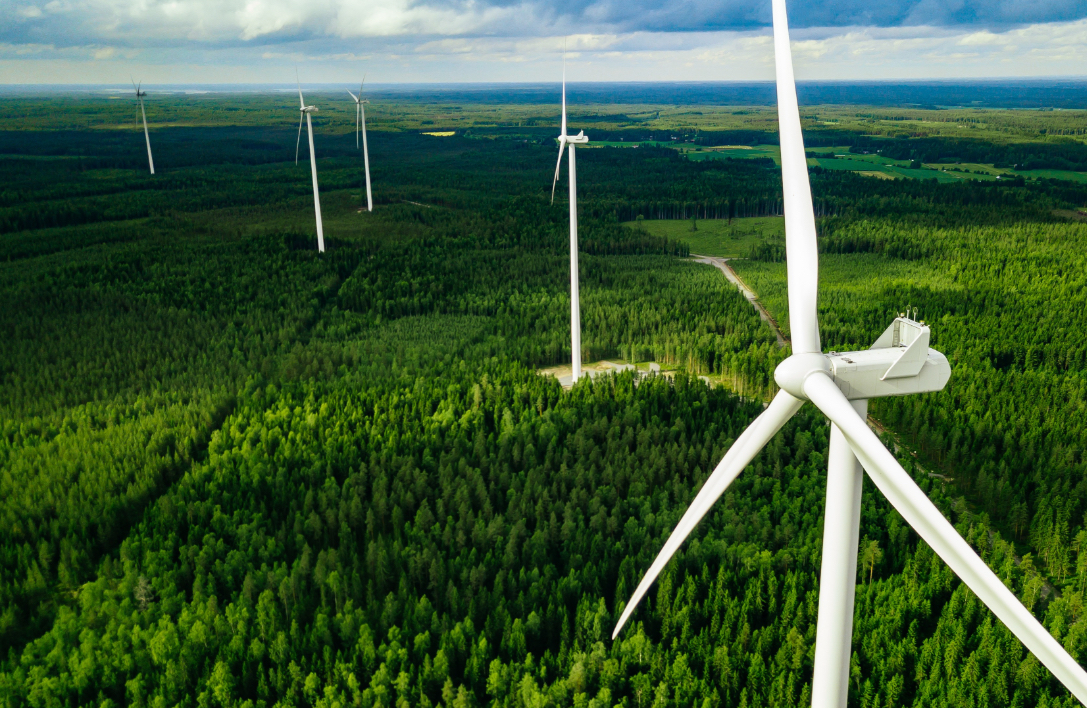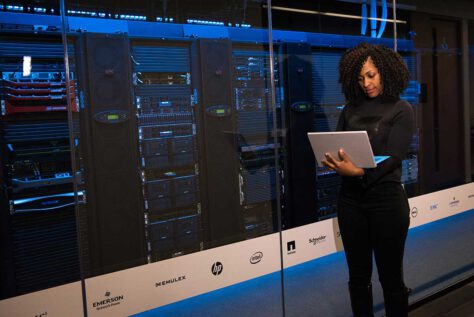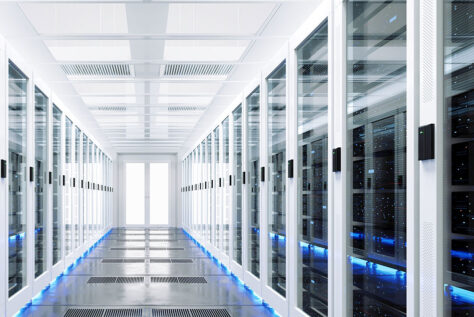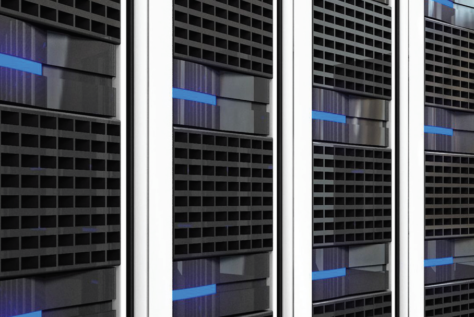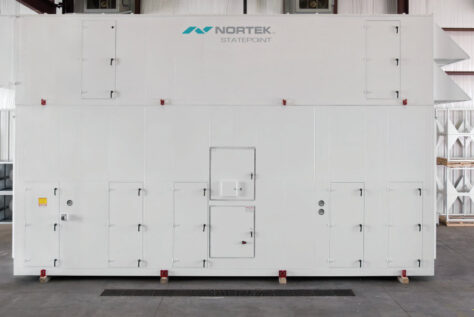Focus on renewable energy alone will not help data centers reach sustainability net-zero goals.
A whole new world of sustainable practices is becoming available to data centers, especially those utilizing water-based cooling technologies.
Renewable solar and wind energy coupled with cutting-edge innovations, such as waste heat utilization (heat recovery) and reclaimed water, can help data centers head toward optimum sustainability. All of these methods are available, easily-adaptable and compatible with today’s state-of-the-art evaporative cooling equipment. Waste heat utilization and reclaimed water, for example, can significantly cut the cooling process’s water usage. These emerging practices combined with the unprecedented PUE and WUE ratings of today’s indirect evaporative cooling technology can significantly help data centers fast-track their lofty net-zero energy goals.
This recent sustainability thrust among data center operators couldn’t come at a better time. Unprecedented high rack heat densities generated by artificial intelligence, autonomous vehicles, gaming, 3D graphics and other emerging technologies are steadily coming online.
Consequently, the oncoming blitz of heat densities is motivating data center operators to find cooling system alternatives that will head off looming finite water and power supply challenges.
There are also increasing concerns that rising rack heat densities might soon become insurmountable for traditional liquid cooling methodologies in terms of power and water availability. Industry statistics reveal rack densities are also rising due to the rapid development of advanced switches and chips, especially in network racks.
Conventional direct expansion (DX) chiller/cooling tower technology can handle nearly any rack heat densities the electronics industry throws at it, but that liquid cooling methodology’s power and water usage is already considered exorbitant in just low and medium power density applications.
Air cooling isn’t the end-all solution for future sustainability either. Air is very effective for cooling hotspots if it’s engineered and implemented correctly. For example, CRAH, fan wall coils and other air distribution methods can be supplied with chilled water via indirect evaporative cooling to sufficiently cool medium density 8 to 10-kW racks in the data hall.
These reasons and the fact that water’s capacity for removing heat is 50 to 1,000 times greater than air, is why the industry favors liquid cooling to accommodate oncoming high heat density racks and the anticipated influx of water- cooled servers. The European Union’s Code of Conduct for Data Centers, for example, has recently demonstrated its cooling methodology preference by mandating current and future data centers become “liquid ready” even if they’re designed with air cooling technology. Similar mandates are anticipated in North America.
Consequently, some European data centers are ambitiously building out complete liquid-ready systems that include pumps, heat exchangers, evaporative or chiller cooling plants and other components, even though they may begin operating with air cooling.
When the fledging trend of water-cooled servers and high density racks with rear door heat exchangers become more mainstream, these data centers can easily switch over to liquid cooling. Or they can combine it with the existing air cooling during the transition, thereby doubling their capacity on the same footprint. A recent Switch Datacenter Group (SDG), Amsterdam, case study demonstrated that a 30-megawatt air cooled data center can deliver up to 60-megawatts when upgraded with rear door heat exchangers or cooling directly at the chip level with water, according to SDG’s CEO Gregor Snip.
Sustainability Measures are Available for Liquid Cooling
Most importantly in terms of sustainability, liquid cooling makes emerging practices, such as waste heat recovery, reclaimed waste water, solar and wind power, more possible than ever before.
However, while these new practices are a step toward net-zero energy, the industry’s continued use of traditional energy- intensive liquid cooling equipment, such as compressors and chillers is a leap backward in sustainability. Compressors, refrigerants, traditional cooling towers and all the liabilities associated with them can be circumvented today with indirect evaporative liquid cooling.
Consequently, several cloud computing users and hyperscale data centers are discovering significant power and water reductions with a recently-developed indirect evaporative liquid cooling method called the StatePoint™ Liquid Cooling (SPLC) system by Nortek Data Center Cooling™. A SPLC system is capable of 1.05 to 1.06-pPUE. Subtract fan coil wall energy and the SPLC’s pPUE alone can drop to an unprecedented 1.025 or 1.03, depending on the climate, operating conditions and equipment. WUE (L/kWh) has been recorded as low as 0.09.
This new method of indirect evaporative uses a unique semi-permeable (membrane) exchanger (SPEX), instead of conventional metal coils for heat exchange. Consequently, the heat exchange is via vapor permeation through the microporous membrane resulting in no contact between the air and water.
Peak power and water can be reduced up to 20-percent and 90-percent, respectively, in cooler climates versus conventional chilled water loop systems.
Besides unprecedented efficiency, this method’s built-in hydronic loop design easily interfaces with waste heat recovery.
Warm 90°F (32°C) data hall return water, can bypass recirculation piping and instead be rejected into district energy loops for external building heating applications. There are more than 940 district energy systems currently available in North American cities, communities, campuses, military bases, airports and healthcare complexes. View them here.
Sending data center waste heat to a district energy system also adds more efficiency to the indirect evaporative cooling system, because heat is rejected externally, rather than processed internally.
The SPLC’s inherent water and air separation helps retain loop water cleanliness, versus older indirect and direct evaporative technologies where water contaminated by air contact may need costly purification before entering the district energy system.
Besides low WUE, another advantage of an indirect evaporative system using SPEX technology is the ability to use recycled waste water. Reclaiming water helps save fresh water for potable applications. Data centers in Ashburn, Virginia and a Google facility in Atlanta are just two sites currently using recycled waste water.
Microsoft has been even more ambitious. They helped retool the city water treatment infrastructure in Quincy, Washington, to provide recycled water for data center use.
Finally, the indirect evaporative cooling system’s pumps, fan array, fan coil walls and other electric components are also ideal for wind and solar power.
Sustainable cooling is good stewardship; however it also reduces a site’s power and water allotment that can be repurposed for IT. Choosing future liquid cooling equipment that can interface all of the current sustainability practices together is not only good business; it’s also good for the environment.
BIO: Kris Holla is Group Vice President, Channel Sales, Nortek Data Center Cooling.
